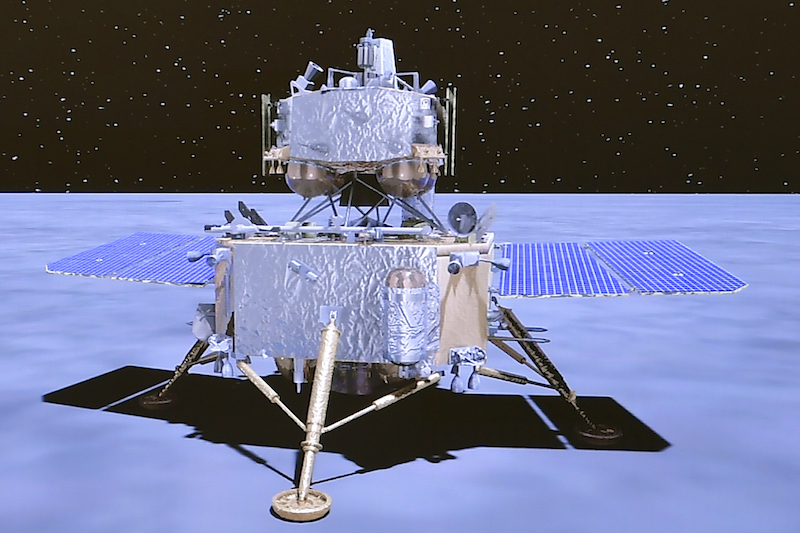Indications that water might be present in Moon rocks have been confirmed by tests of samples from China’s space programme.
The Chang’E-5 lunar lander detected faint traces of water ions – hydroxyl – in apatite, a group of phosphate minerals found in Moon rocks.
The traces of water were not as high as expected, the researchers wrote in Nature Communications, a peer-reviewed journal.
China’s space programme landed the Chang’e 5 on the Moon in December 2020 and took samples of lunar soil, known as regolith, as well as rocks.
The mission’s research team has now analysed the lander samples and found signs of water bound up in the mineral structure of the samples.
Lunar Water
Previously, water was thought mostly to be a product of solar wind or meteorite and comet impacts.
Recently, some researchers have also suggested that lunar water may originate from wind from Earth.
They found levels of water around 28.5 parts per million in the lunar soil, although the were as high as 179 parts per million in the apatite within the rocks.
“Lunar water is not only an important key to the formation and evolution of the Moon itself, but also provides significant information about the evolution of the solar system,” the researchers wrote.
“In addition, its presence is expected to provide support for future human lunar in situ resources.”
- George Russell
READ MORE:
Japan, US Working on Moon Landing Project – Kyodo
Jupiter Moons Focus of Search for Extraterrestrial Life
China Moon Rover Explores ‘Different’ Far Side – New Scientist
























